The Horror Tree Presents…An Interview with Andy Lockwood

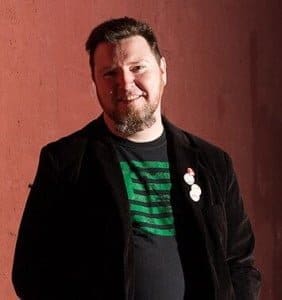 Selene: Welcome to The Horror Tree, and thanks for agreeing to this interview today. First off, tell us a bit about yourself.
Selene: Welcome to The Horror Tree, and thanks for agreeing to this interview today. First off, tell us a bit about yourself.
Andy: Thanks for having me, Selene. Well, really, what to say? I always feel like people want a confession when they ask someone who writes horror to talk about themselves… like I’m going to admit to some dark secret that explains why I write what I write. Unfortunately, I don’t have any secrets like that. I’m just a huge fan of the horror genre and community at large. By day, I’m an elearning developer, which I swear is more exciting than it sounds – for me, anyway. I create online training with a focus on user experience. I try to make training interesting for the users. From the feedback we get, I think I’m mostly successful. Beyond that, I’m a cat loving, coffee addicted, book collecting, movie nerd and pop culture geek. I get excited about some of the stupidest things. I am also closing in on 9 delightful months as a newlywed. That’s really the biggest and best thing I’ve got going on right now.
Selene: How long have you been writing, and what draws you to the horror genre?
Andy: I think everyone wants to say something like “I’ve been writing all my life” and while that’s sort of true, I’ve only been really serious about it in last handful of years. I went to school for film and that really rekindled my love of storytelling, but film is a much more involved medium – there are budgets and crews and a cast… it’s too much. Writing is unbridled. Whatever you want in there, it suddenly exists.
If I wanted a monster in a film, I needed to come up with a concept, hire an artist to create it, get a special effects team or a CGI team to bring it to life, then we have to shoot the scenes… like I said: too much. If I want a monster in a book, I come up with it, and then I decide how much to tell. The great thing is that sometimes it’s what you don’t include makes it that much more powerful. Your brain will start filling in the gaps and suddenly things are more horrifying than I could ever come up with.
It’s less that I was drawn to the genre and more that I’ve always been here. I grew up watching horror movies with my dad, my aunt bought me Stephen King novels for every birthday and Christmas, my uncle took me to my first haunted house… I come from a long line of weirdos, so it was just kind of natural to be part of it and embrace it. There’s a very unrepeatable exhilaration to being scared. It doesn’t happen often for me, so I’m always chasing it… maybe that’s why. My wife would tell you that my scare is broken. I think it’s been broken for a long time, that’s probably why I’m always chasing the scares.
Selene: I read your story “The Christmas Miracle,” in the Mutate anthology. Let’s talk about body horror. How do you approach writing visceral scenes?
Andy: So, visceral horror is really not that much of a stretch when you realize how terrifying the human body is on its own. We are all just walking sacks of blood and meat, and any number of our organs are just waiting for the right moment to kill us. Everything about humans is terrifying. Everything that we do and are is a nightmare when you think about it.
So, what I like is the juxtaposition of something so natural and beautiful – like pregnancy – and adding an inhuman element to it, something unnatural and monstrous, as happens in Christmas Miracle. From there, I’m just following the natural progression of things in the story.
I don’t rely on body horror very often. I try to limit myself because it’s something that can be overdone so quickly. But sometimes I get an idea to play with something ugly and perverse. It gives me a chance to play Frankenstein from the safety of my own mind.
 Selene: In the bio included in the Mutate anthology, there’s a mention of your 2013 novel Empty Hallways (which I grabbed over on Kindle but haven’t started reading yet!). Is it true you wrote it for National Novel Writing Month (NaNoWriMo)? Since it’s November, and some of our readers are probably deep in their word counts, let’s talk about that. Do you participate every year, and how does your NaNo process work?
Selene: In the bio included in the Mutate anthology, there’s a mention of your 2013 novel Empty Hallways (which I grabbed over on Kindle but haven’t started reading yet!). Is it true you wrote it for National Novel Writing Month (NaNoWriMo)? Since it’s November, and some of our readers are probably deep in their word counts, let’s talk about that. Do you participate every year, and how does your NaNo process work?
Andy: Actually, all of my novels started as a NaNoWriMo challenge. Those 30 days are key for cranking out a fast first draft and putting an idea out of our head and on paper. I try to participate every year. I’ve got a great story that I’ve started working on for my fifth novel and next NaNoWriMo challenge… my tenth, maybe?
As far as a process, I’m what the NaNoWriMo community calls a Pantser – as it “by the seat of my pants”. When I was gearing up to write Empty Hallways, all I had was a title and the desire to write a ghost story.
So, it’s not much help to anyone on the receiving end of this advice, but really: it’s writing. Just write. Put it all down, one word at a time and keep going until it’s done. That’s the whole secret. It’s not even my secret. I’m pretty sure that’s advice from Neil Gaiman’s 8 Rules of Writing (It is: https://www.brainpickings.org/2012/09/28/neil-gaiman-8-rules-of-writing/). But it’s solid advice that will get you through 30 days of NaNo. Don’t think, just write.
Selene: Speaking of November, you’ve got two author events upcoming in the next few weeks. Now’s the time to promote them, for any of our readers in your area.
Andy: Ah, thanks so much! I’m really excited about these events.
November 11, I’ll be in Monroe, Michigan for Writers on the River (https://monroe.lib.mi.us/events/writers-river), hosted by the Monroe County Library System. It promises to be a great time, with a couple of my favorite local authors: Peggy Christie and Chad Erway. This is my first time at this event, so I’ve got my fingers crossed for an amazing day with about 30 other authors.
November 17, I’ll be taking over The Scriptorium (http://www.greywolfepublishing.com/scriptorium-calendar.html) in Clawson, MI. The Scriptorium might be the best thing to happen to Michigan authors – Diana loves her authors and does so much for them, including letting them takeover the store to promote themselves. So, I’ll be setting up camp, ready to chat, sign books, and who knows what else we’ll do with the day. In the afternoon, I’ll be relieved by Andrew Lark, another fantastic local author. I’m looking forward to chatting with him for a while and hearing about what he’s been working on.
And that’s it for the year. My next event isn’t until 2019, but they’ll all be announced on my blog.
Selene: You’ve got a new novel coming out soon. Tell us about that.
Andy: Yes, Threshold comes out February 14, 2019. Threshold is the story of a mirror, but much in the same way that Empty Hallways is the story of a hospital. Cate is willed an antique mirror by her grandmother, but finds that the mirror has a dark secret that may have led to the death of her grandmother and many of its previous owners. While Cate tries to uncover the mirror’s secrets, her life is ebbing away as she is haunted by her own reflection.
There’s a presence that thrums through this story that gave me the heebie jeebies while I was reading it over through the drafts. Sometimes my imagination runs away with me. Mirrors don’t usually freak me out, but after writing this novel, I’m not sure I’ll be able to look at one the same way again – literally. But at the heart of it, like all of my stories, there’s a human element; a love story. It’s possibly my favorite thing about horror – not the scares, but the raw emotional value that I hide in the stories.
Selene: Here’s a standard “author question.” What do you like to read, and where do you get your inspiration for your stories?
Andy: I read a lot of different genres, and different stories. Your audience may think the worst of me, but I judge books by their covers. If I think a cover looks good, I’ll pick it up check out the blurb. If I like the blurb, I’ll read it. Or I’ll pick up the books my wife likes to read. It gives us something more to talk about – or inside jokes. Readers have the best inside jokes, like codewords that get you into a secret society.
More recently, I’ve been introduced to the Skulduggery Pleasant series, The Kingkiller Chronicles, and I’ve been slowly working my way through Stephen King’s early works and the Dresden Files from the beginning.
I get inspiration from everywhere. Anything can be twisted into something else. A mirror can be turned into a portal to another world. A hospital can hold a dark secret. People can be dangerous and ugly and monstrous behind their smiles and kind words.
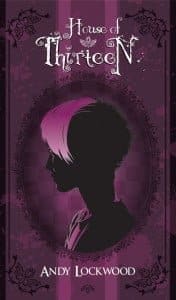 Selene: Your other novel, House of Thirteen, is the first of a series, and At Calendar’s End is a limited series which takes place (and was published) throughout a calendar year. What are some of the pros and cons of writing a series, versus a stand-alone story?
Selene: Your other novel, House of Thirteen, is the first of a series, and At Calendar’s End is a limited series which takes place (and was published) throughout a calendar year. What are some of the pros and cons of writing a series, versus a stand-alone story?
Andy: The obvious pro is that you don’t have to quit working with characters that you adore. I really did fall in love with the characters in House of Thirteen. It was already hard enough for me to end the first book, if that had been it, I think I would have been crushed. I’ve been working slowly on Book Two, which means I do a lot of rereading through Book One… I can understand why it’s the fan favorite, there are some really wonderful characters in this story, and every now and again I’ll reread a passage, a little amazed that my writing is as good as it is.
It’s nice to have something familiar that you can drop back into and start writing without any need for world-building and origins and character introduction.
I think the downside to writing a series of any length is the struggle to keep the story going. There are times – especially on a project like At Calendar’s End, where it was tough sometimes to juggle such a big cast of characters and keep them interesting. Calendar has a cast of 13 characters, plus incidental characters scattered throughout. But thirteen characters is a hard crowd to keep shuffling around. You have to come up with things for them to do because people don’t just stop existing because you aren’t paying attention to them. It gets to be maddening when you’re trying to keep everyone straight and how you are going to keep everything moving to the end of the story. To borrow a phrase, it’s a lot like herding cats.
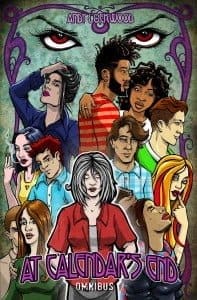 Selene: For At Calendar’s End, you worked with a cover artist, Brian Ritson. What was that like? Would you consider further collaborations, or a graphic novel?
Selene: For At Calendar’s End, you worked with a cover artist, Brian Ritson. What was that like? Would you consider further collaborations, or a graphic novel?
Andy: I love working with Brian. We’ve known each other for a long time; he’s one of my dearest friends. He’s been my cover artist since I started publishing. He did the covers for Empty Hallways, and House of Thirteen, and he’ll be doing my covers until he doesn’t want to anymore.
It’s kind of to the point where I can give him what I’m thinking about for a cover – I can give him a crappy sketch – and just know that what he’s going to do with that is going to be awesome and exceed my expectations.
When I approached him with my idea for At Calendar’s End, I was sure he was going to turn me down. It was so much to ask. It was a taxing project, and it’s a lot to ask of an artist, but Brian worked magic. Sometimes all I had for him was a description of a character and nothing else. A lot of the art is his – not just his as in he did the art, but his as in he actually came up with the ideas, what the characters look like, and the execution of the whole cover design. The coloring book for At Calendar’s End was all his idea. (http://a.co/d/j5YRCOM). It’s brilliant. You never think you’re going to have these accomplishments, like “a coloring book based on your work” until suddenly there it is.
But yes, I will collaborate with Brian until he is done with me. It’s always a pleasure working with him, and a delight seeing his art come to life. I can’t tell you how excited I am for his art on Threshold.
Selene: Speaking of collaborations, your wife is an editor. Do you enjoy working with her, and her advice (as Stephen King says about his wife’s suggestions, even when they’re great his first response is “Yeah, but…”)?
Andy: I feel like saying anything but “yes” to this question is kind of a trap. Seriously though, yes, I love working with her. She is a non-stop supporter. She’s been there since all this author nonsense started. I don’t think either of us would have it any other way.
There are these moments as a writer where you have to take a breath and just step away. Those moments are super important when your editor is telling you things you don’t want to hear about your writing. The truth is that 99% of the time, the editor is right. They know what they are talking about. This is their job, and you just have to stop and accept that they aren’t criticizing your work because they want to hurt you, but they are invested in this project alongside you. They want the story to succeed as much as you do.
That doesn’t mean it is easy to take criticism.
The wonderful thing about having Bailey as an editor is that she knows how to wrangle me. Yes, she is my editor, but she is also my wife and my support system, both life and work. She knows how to talk to me about changes that need to happen. You could call it babying. She’s really good at it. But there have been arguments. There are these moments where she is trying to talk to me about my characters and I don’t want to hear it. It gets a little tense and I have to remember that Bailey the Editor and Bailey the Wife are separate people. And then, there are times where I know what the story calls for, but she is invested in the characters and doesn’t want anything to happen to them, then she has to remember that Andy the Writer and Andy the Husband are separate people – and both of them would like to live through the tragedies that befall the characters.
I totally understand that “Yeah, but…” Stephen King is talking about. It’s in the same bundle of nerves as “you just don’t get it…” but they do, and you as the writer just need to take a breather and give it time, because Bailey can tell you… it might be an hour, or it might be a day, but at some point, I’m going to come back and tell her that she was right and I’m going to make the changes she told me to.
Selene: You’re also a former student of film, and have made a short film called Atlas. How does working on a film differ from writing prose, and how might film influence your other work?
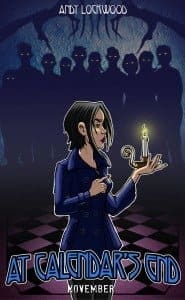 Andy: Writing has no budget. If you want it, you only have to describe it and it’s there. It’s an amazing weight off your shoulders. Film is a much more difficult discipline because of all the parts and people involved. It’s also much harder on the writer creatively.
Andy: Writing has no budget. If you want it, you only have to describe it and it’s there. It’s an amazing weight off your shoulders. Film is a much more difficult discipline because of all the parts and people involved. It’s also much harder on the writer creatively.
When you write, you’re playing a film in your head. You’re describing scenes playing on your mind’s eye. But when you write a script, you’re providing cues and dialogue – and all of that is subject to change. You may think you know how it’s going to play out, but that’s the version you see in your head. Add in a director with his own sense of the scene, actors who have their own take on characters and delivery, a budget that may not have the money for the setting you wanted, etc… suddenly, that scene in your head looks a lot different from the scene that is actually being shot.
When Nathan Porter and I wrote Atlas, he was a super hero that could do everything. The trouble was that we were working on a micro budget and it was just the two of us shooting; the two of us would be doing the post-production, too. Suddenly, we’re making executive cuts to figure out what Atlas can do within our constraints.
On the other side of that, when I write a novel or a short story, I’m still seeing the movie play out in my head, but the story I’m writing is me telling you what that movie looks like. I’m going to tell you all the details you need to hear in order to get the story the way I want you to get it. I know you’re not going to get everything. That’s just how it goes. But I’m going to give you the important details and let you fill in the rest. It’s still my movie, and you’re seeing it mostly the way I wanted you to.
Selene: Your bio mentions you returned to school relatively late, and eventually obtained two film degrees. What was it like going back to school “late,” if that means you attended as a mature student? Do you find you use what you learned in your writing process?
Andy: I was in my late-20s when I went back to school for film. I was years older than most of the people in the program. It wasn’t that much of an issue, especially among film geeks. We’ve all seen Lynch and Kurosawa and Citizen Kane and all those movies that appear on all of the “greatest films” lists. Age didn’t really enter into it except when you’re trying to market to a specific audience.
I definitely use what I learned in my film classes. Setting the mood of a scene is exceptionally important. Film and prose are both, at least in my case, character-driven. Ideas translate very well between the two media, the only thing that really changes is the execution.
Selene: Let’s talk about setting. You live in Michigan, and your story in Tales of Horror On Halloween Night was set in Detroit. Do you “write what you know” with your settings, or do you like to explore stories set in different places?
Andy: I prefer to piecemeal my stories. I take a little of what I know and a lot of what I want to say, and I try to find a happy balance between the two. There’s very little of what I know in The Nain Rouge Incident, except that I really wanted to play with some Detroit legends, so this seemed like a really good place to start. Really, I’m combining a couple of pieces of Detroit folklore: the Nain Rouge and Devil’s Night. They worked really well together – at least I felt so. The story is also a period piece set in early-century Detroit. I have done very little historical research, but I also feel like that isn’t as necessary for the kinds of stories I write as it might be for some other writers.
I’m not writing for accuracy, I’m writing for entertainment, so I tend to cobble a lot of information together for my stories, settings, and characters, and a majority of it gets thrown out because it’s extraneous. There’s no place to fit it in without cramming it, so I leave it on the cutting room floor.
Selene: What about characters? What kinds of characters do you like to write about, and how do you come up with their personalities and choices?
Andy: I write what I want to read, so a lot of these characters that I am coming up with I either think are underrepresented in the stuff I am reading, or I think there is a really cool idea for a character and I try to build a story around them.
I have a lot of fun writing 20-somethings. I like putting that youthful lens on the world and trying to see it with that same frame of reference I had when I was just starting to figure things out. There’s a lot of room for bold assumptions and terrible mistakes and everything seems so much more drastic when you’re in that grouping. The highs are higher and the lows are lower, and it just makes for more compelling characters.
My favorite themes are mortality, identity, and love. I like exploring these, whether they are all crammed together, like in Empty Hallways, or they are all unknown and out of reach, like in House of Thirteen, I like to give characters some position within those three themes.
In House of Thirteen, Ren dies and comes back – right from the get-go, she is dealing with her mortality and in the process, kind of loses herself and her identity as a person because of this new phase of her life.
Mostly, I let the characters define their own personalities. It usually comes out in the dynamics between characters. Certain stories need certain people, and those people need other characters to play off of.
In Threshold, Cate and her boyfriend Lucas have a playfully antagonistic relationship. They’re invested in the relationship and in love, but at the same time, they are wrapped up in who they are as individuals, not as a couple. Through the story, they start to feel things out and understand who they are as individuals and as a couple – because and in spite of the true antagonist of the story.
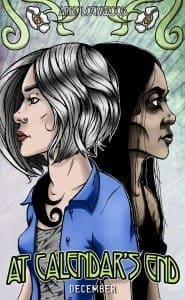 Selene: What advice would you give a writer who’s just starting?
Selene: What advice would you give a writer who’s just starting?
Andy: Write the stories you want to read. Look for inspiration for those stories. Watch tv, and movies, and start looking ahead of the plot. Try predicting the story and see where your story diverts from what you see. Take those predictions and start your own stories. Just one good idea will unfold into a story for you.
Come up with what-ifs, swap characters out of existing stories, combine two pieces of pop culture and create something new. Tell the story from a new perspective, maybe it’s the villain’s story… maybe it’s the dog’s.
Write a story that you get excited about telling. It doesn’t matter what it is; it only matters that you write it.
And the best piece of bad advice I can offer is this: write what you want to write, what you enjoy writing; don’t write what you think is going to sell. Sure, it might be the harder road, and there might not be any success in it, but the reward is its own. You’re not chasing anyone; you’re not rushing to keep up with tropes and genres. Do your own thing. Make yourself happy.
Selene: Thank you again for answering my questions. Do you have anything else you’d like to talk about?
Andy: I would love to just put it out there that the people of NaNoWriMo work their butt off every year to put this program on for the rest of the world. If you can, show them a little love and buy a tshirt or a coffee mug from their store to help keep the lights on. Then, find your local NaNo chapter and sign up. Show some support, go to the meetings, get involved. You may be a good writer on your own, but you’re a better writer with a community. I tried and failed to win NaNo for years before I finally found my people. I finished that year and six months later put out my first novel.
It’s not a gimmick. They don’t ask me to advertise. This is a community of writers, both hobbyists and professionals, that love what they do and want to encourage and pass it forward.
I believe that the world needs more stories, and we’re not going to get them if people aren’t writing them.
Thank you for having me, Selene, it’s been a pleasure.
If you would like to see more of Andy’s work, check out the following links:
Facebook: https://www.facebook.com/happierthoughts
Twitter: @randomgauge
Blog, books, and events: www.happierthoughts.com
Amazon author page: https://www.amazon.com/Andy-Lockwood/e/B00EZAVBEU/ref=sr_ntt_srch_lnk_7?qid=1541565793&sr=8-7
Bailey’s editing site: justduckyediting.com
- About the Author
- Latest Posts
Selene MacLeod is a night operator and sometime writing hobbyist. She holds a BA in Communications from Wilfrid Laurier University and resides in Kitchener, Ontario. Her work has appeared in several horror and crime fiction anthologies, most recently Shotgun Honey, Drag Noir (Fox Spirit Books); and the upcoming Freakshow: Freakishly Fascinating Tales of Mystery and Suspense (Copper Pen Press), and Tragedy Queens (Clash Media).She’s most excited about editing a charity anthology for Nocturnicorn Books called Anthem: A Tribute to Leonard Cohen, due out late 2017.












